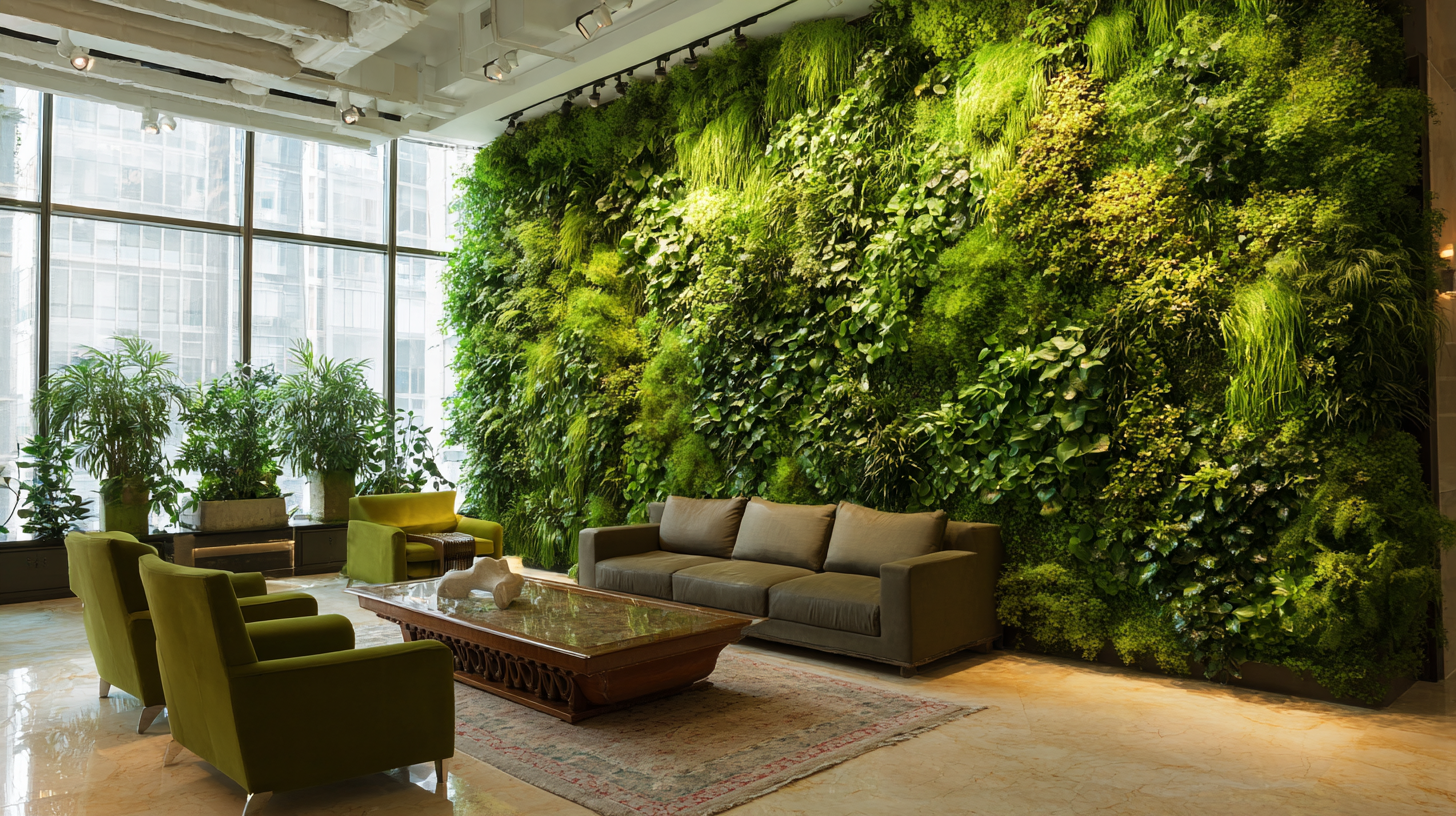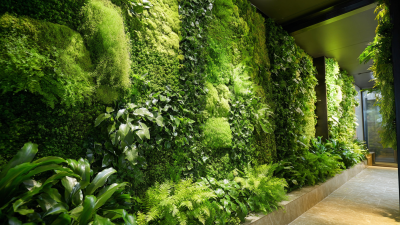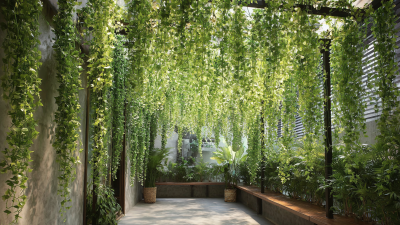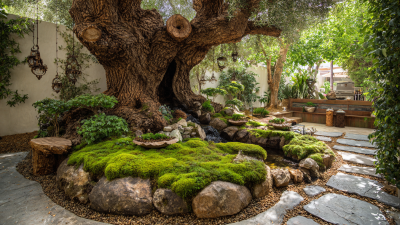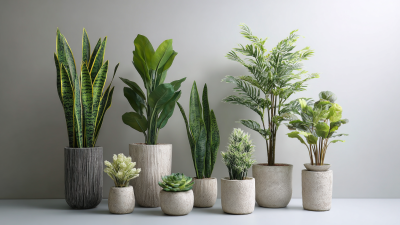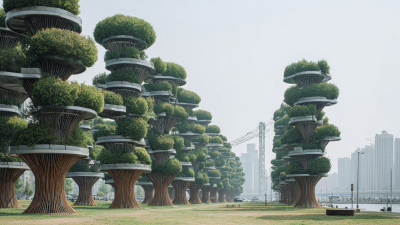In recent years, the integration of nature into urban environments has gained significant attention, leading to innovative solutions such as Artificial Green Walls. These vertical gardens not only enhance the aesthetic appeal of modern spaces but also provide a myriad of benefits that contribute to healthier living and working environments. As urbanization continues to rise, the demand for sustainable design practices grows, making Artificial Green Walls a crucial addition to contemporary architecture.
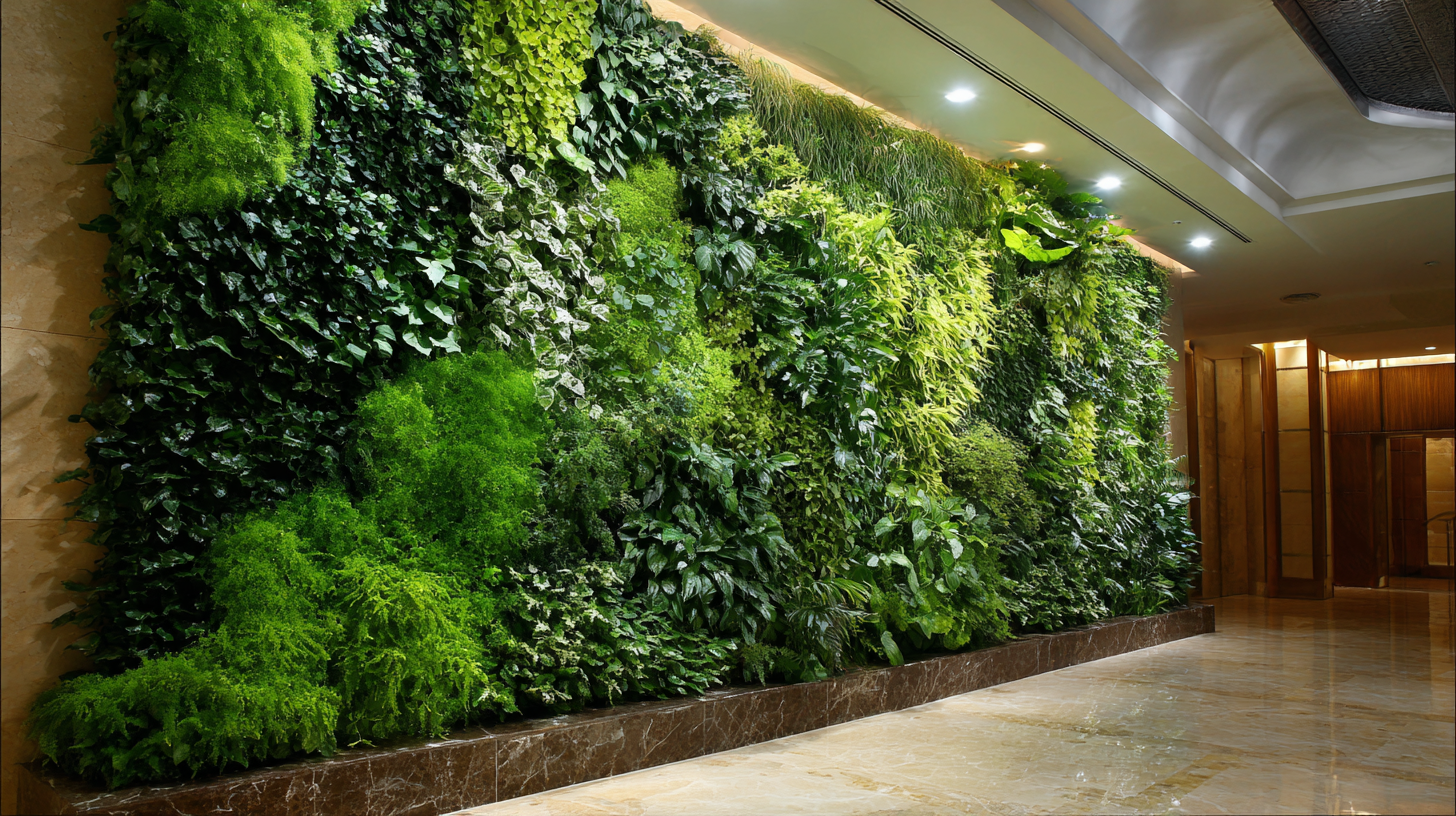
This article explores the top five advantages of incorporating Artificial Green Walls into modern spaces. From improving air quality to fostering a sense of tranquility, these installations serve as a bridge between nature and urban life. Moreover, they offer practical solutions for space constraints while enhancing the overall ambiance of both indoor and outdoor settings. Through a thoughtful examination of these benefits, we aim to illustrate how Artificial Green Walls can transform ordinary environments into vibrant, eco-friendly spaces that promote wellbeing and sustainability.
Artificial green walls have gained significant popularity in modern spaces, not just for their aesthetic appeal but also for their profound impact on indoor air quality. According to a report by the Global Indoor Air Quality Consultants, indoor air pollution can be three to five times greater than outdoor levels, causing various health issues. Artificial green walls help mitigate this problem by acting as biofilters, absorbing pollutants and increasing oxygen levels. Research indicates that integrating such green installations can enhance air quality by up to 30%, making them a valuable addition to offices, homes, and public spaces.
Incorporating artificial green walls can also create a more serene environment, which has been linked to improved mental health and productivity. A recent study published in the Journal of Environmental Psychology found that green elements in indoor spaces can reduce stress levels by up to 60%. To maximize the benefits, consider using a variety of plants known for their air-purifying qualities—such as peace lilies and snake plants—within your artificial wall design.
**Tips:** When selecting an artificial green wall, ensure it includes plants that have been scientifically proven to improve air quality. Regular maintenance and cleaning will also enhance its effectiveness in filtering the air. Additionally, position these walls strategically near ventilation areas to optimize airflow and circulation throughout your space.

Artificial green walls are increasingly being integrated into modern spaces, offering both aesthetic appeal and functional benefits. The vibrant presence of lush greenery transforms stark environments into dynamic atmospheres, promoting a sense of calm and connection to nature. These walls can be tailored to fit various design styles, from sleek corporate offices to cozy residential nooks, enhancing visual interest through diverse plant selections and textures.
Beyond their beauty, artificial green walls serve as a practical solution for urban spaces where natural vegetation may be sparse. They can be installed in interior or exterior settings without the need for extensive maintenance. By incorporating these walls into design plans, architects and interior designers can create serene environments that foster creativity and productivity. The interplay of artificial flora with modern architectural elements not only elevates the design quality but also contributes to a more inviting and engaging space for occupants and visitors alike.
Artificial green walls offer a unique blend of aesthetics and functionality in modern spaces, and one of the most compelling benefits lies in their cost-effectiveness. While the initial investment may seem substantial, green walls often lead to significant long-term savings. They can improve insulation, reducing heating and cooling costs by maintaining a stable indoor climate. This energy efficiency can translate into lower utility bills, making them a smart financial choice over time.
Moreover, artificial green walls can enhance property value and attract tenants or buyers in commercial and residential markets. As urbanization increases and more people seek environmentally friendly living and working conditions, properties featuring green walls become more appealing. Additionally, reduced maintenance costs, thanks to the durability of artificial materials, further enhance their cost-effectiveness. By investing in artificial green walls, property owners not only contribute to a more sustainable environment but also reap the financial rewards associated with modern real estate trends.
Artificial green walls are becoming a cornerstone of sustainable design in modern spaces, significantly reducing environmental impact while enhancing aesthetics. According to a report by the Green Building Council, integrating greenery into urban architecture can lower energy consumption by up to 30%. This is achieved through natural insulation that reduces the need for heating and cooling, subsequently cutting down greenhouse gas emissions.
Incorporating artificial greenery not only improves energy efficiency but also combats air pollution. The World Health Organization notes that urban greenery can reduce air toxins by as much as 60%. With artificial green walls, spaces can simulate this effect, leading to cleaner, healthier environments without the constant maintenance demands of living plants.
**Tips for Implementation:** Start with a site assessment to determine the best locations for green walls, ensuring they receive adequate light and visibility for maximum effect. Additionally, consider interactive designs that engage occupants, such as systems that retain and recycle rainwater. Finally, periodically updating the greenery design can keep the installation fresh and relevant, further enhancing its eye-catching appeal.
| Benefit | Description | Environmental Impact | Cost Saving Potential | Design Versatility |
|---|---|---|---|---|
| Improved Air Quality | Artificial green walls can reduce indoor air pollutants by mimicking natural processes. | Reduces reliance on air purification systems. | Potential savings on HVAC costs due to improved ventilation. | Can be customized to fit various architectural styles. |
| Aesthetic Appeal | Enhances the visual appeal of modern spaces with greenery. | Promotes biodiversity in urban settings. | May increase property value through improved aesthetics. | Available in a variety of designs and styles. |
| Noise Reduction | Helps absorb sound and reduce noise pollution in urban environments. | Contributes to quieter indoor environments. | Potential reduction in costs associated with noise control solutions. | Flexible installation options available. |
| Thermal Regulation | Provides insulation and helps regulate temperature indoors. | Reduces energy consumption for heating and cooling. | Long-term savings on energy bills. | Integrates seamlessly into various interior designs. |
| Wellness Benefits | Enhances well-being and productivity by connecting with nature. | Creates healthier work and living environments. | Potential reductions in healthcare costs through improved well-being. | Adaptable to various types of spaces and uses. |
Artificial green walls have emerged as a popular choice for contemporary interior design, combining aesthetic appeal with practicality. One of the major advantages of these installations is their low maintenance requirements. According to a report by the National Association of Landscape Professionals, nearly 70% of businesses implementing artificial greenery noted a significant reduction in maintenance time and cost compared to live plants. This is particularly beneficial for modern spaces that aim to present a polished and refined image without the ongoing commitment that live plant care demands.
The simplicity of care for artificial green walls contributes to their appeal in high-traffic environments. Unlike natural walls, which require regular watering, pruning, and pest management, artificial options only need occasional dusting to maintain their visual quality. A study from the University of California indicated that the maintenance perception for artificial plants was overwhelmingly positive, with 85% of surveyed office managers preferring them due to their easy upkeep. This ease of maintenance not only allows for a consistent presentation but also frees up resources and time for businesses to focus on their core activities, ultimately enhancing productivity in the workspace.
